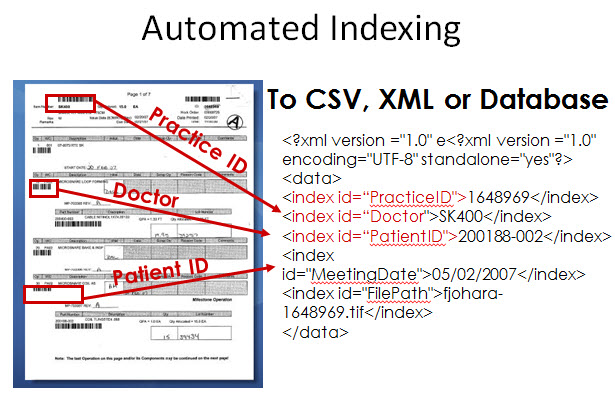Barcodes Help Automate Indexing Through XML Files
XML, the eXtensible Markup Language, offers a portable way to pass indexing or metadata between systems. It is also a common format used to populate EMR and Document Management systems, by capturing the vital information for a document set directly into a form that EMR and DM systems can understand.
Barcodes offer the most accurate way of automating information capture into these systems. These can be in the form of one-dimensional (1D) linear bars as shown below, or two-dimensional (2D) patterns we see commonly as patch codes, qr codes or PDF417. In both cases, the data stored within the barcodes can be very useful in populating an EMR or DM system.
Using a scripting language, users of ImageRamp can assign barcodes to index values for post processing, file naming, and folder creation. In the medical record sample below, we can see how the Practice ID (barcode1) is captured into the XML along with the tag name "PracticeID." Each of the subsequent barcode values from the 1D or 2D barcodes can now be assigned to Fields in our EMR or DM environment. See the "Doctor" and "PatientID" information captured in our example.
If barcodes do not exist in your current document set, there are several methods available to create them with many free tools found in the market. Read more on how to create free barcode separation pages.
Also to learn more about ImageRamp and data mining of unstructured or structured data, read Data Mining Automates Document Capture.

